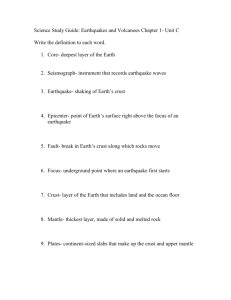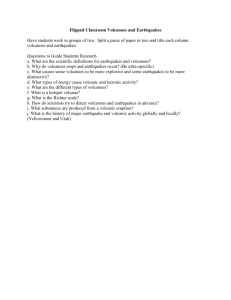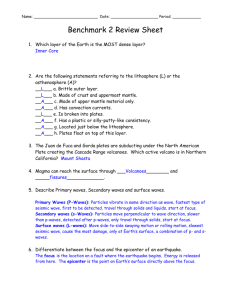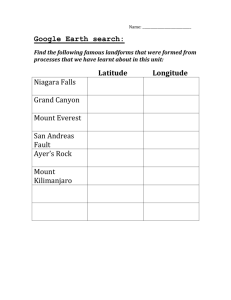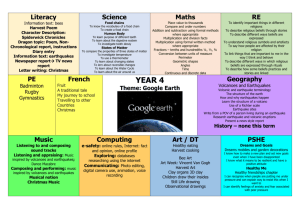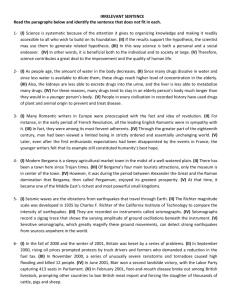Earthquakes and Volcanoes
advertisement
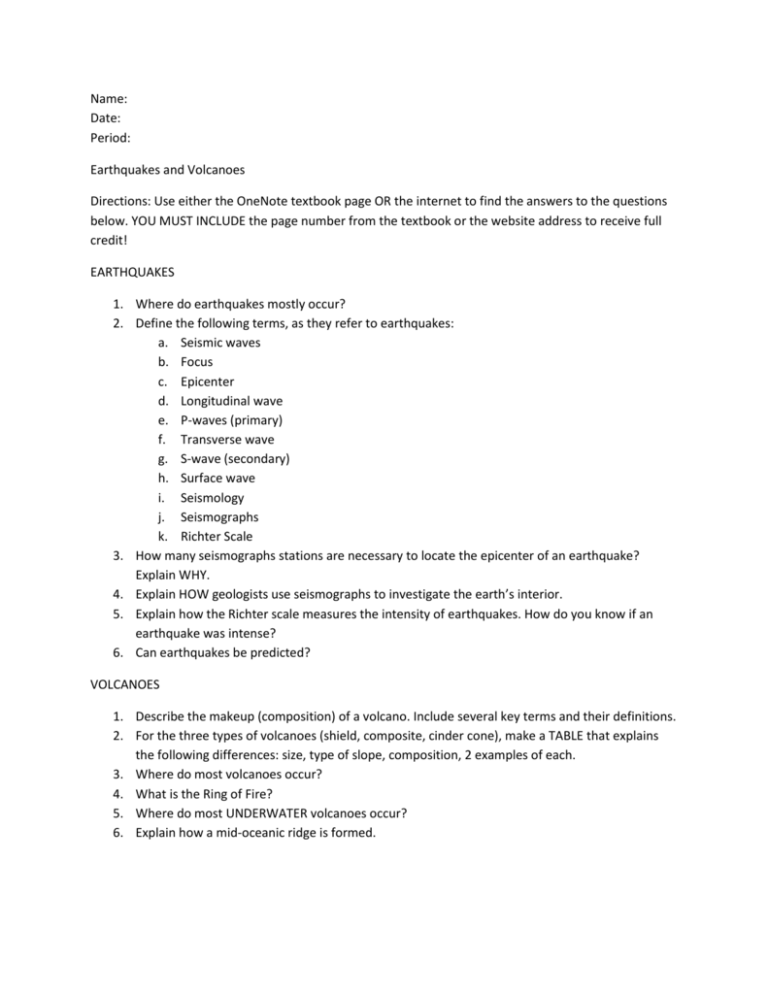
Name: Date: Period: Earthquakes and Volcanoes Directions: Use either the OneNote textbook page OR the internet to find the answers to the questions below. YOU MUST INCLUDE the page number from the textbook or the website address to receive full credit! EARTHQUAKES 1. Where do earthquakes mostly occur? 2. Define the following terms, as they refer to earthquakes: a. Seismic waves b. Focus c. Epicenter d. Longitudinal wave e. P-waves (primary) f. Transverse wave g. S-wave (secondary) h. Surface wave i. Seismology j. Seismographs k. Richter Scale 3. How many seismographs stations are necessary to locate the epicenter of an earthquake? Explain WHY. 4. Explain HOW geologists use seismographs to investigate the earth’s interior. 5. Explain how the Richter scale measures the intensity of earthquakes. How do you know if an earthquake was intense? 6. Can earthquakes be predicted? VOLCANOES 1. Describe the makeup (composition) of a volcano. Include several key terms and their definitions. 2. For the three types of volcanoes (shield, composite, cinder cone), make a TABLE that explains the following differences: size, type of slope, composition, 2 examples of each. 3. Where do most volcanoes occur? 4. What is the Ring of Fire? 5. Where do most UNDERWATER volcanoes occur? 6. Explain how a mid-oceanic ridge is formed.





